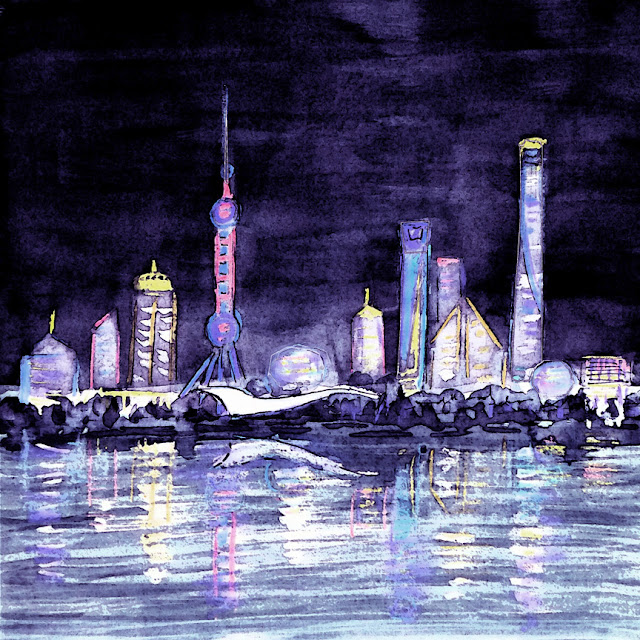My first attempt to paint this Incan ruin
on a mountainside above Cusco is shown below.
The words ‘Viva El Peru’ on the far side of the valley are actually lighter than their surroundings and started out written in a white crayon resist, but the resist lost its grip, and I decided to use ink instead. But I would have preferred to get the right (white) effect with the crayon – Hence the cautionary tale…
Be careful where you find your white crayons
I was having lunch in a restaurant with my daughter and her kids in 2009 just before I took one of them to Peru, and the kids were given white placemats and crayons to play with. I noticed there were a lot of white crayons (normally kind of hard to come by as you have to buy a large pack to get one white crayon). My daughter pointed out that the restaurant had lots because, obviously, ”What kid is going to want to draw on white paper with a white crayon?”
I asked if I could have a couple, and the answer was, “Sure – what kid is going to want to draw on white paper with a white crayon?” So we took a couple of them all the way to Peru -- where they proved to be completely useless at resisting anything because, again obviously, the crayons kids are given in restaurants are washable.
This painting's 'Viva El Peru' was done with totally unwashable crayons.












